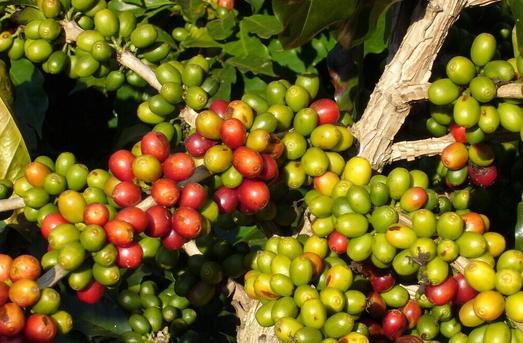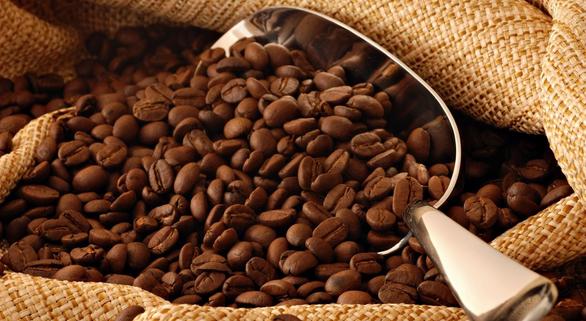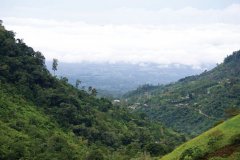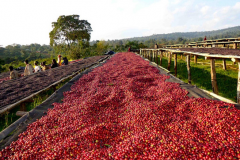The history of coffee cultivation in Costa Rica for more than 200 years has created the characteristics of coffee flavor with excellent acidity.

For professional baristas, please follow the coffee workshop (Wechat official account cafe_style)
Costa Rican coffee is produced in the Republic of Costa Rica in the south of Central America. Coffee is an important economic source of Costa Rica. It was introduced in 1808 and has been cultivated for more than 200 years.
The development
The coffee beans produced in the high latitudes of Costa Rica are famous in the world, full-bodied, mild in taste, but extremely sour. The coffee beans here have been carefully processed, which is why there is high-quality coffee. Located in the south of SanJos é, the capital of Tarasu, Costa Rica is one of the most valued coffee growers in the country. Tarasu (Tarrazu) is one of the major coffee producers in the world.
Costa Rica has 1x3 population invested in coffee-related industries. Colombians say that coffee has changed the country and enjoyed a rich environment, and coffee has indeed made an outstanding contribution. Although Costa Rica ranks third from the bottom in terms of land area in China and the United States, its economic environment is better than that of half of the countries. due to the affluence of its people, social stability and the ability to care about environmental issues, there are more than 30 national parks in Colombia.
Coffee was introduced to Costa Rica from Cuba in 1729, and its coffee industry is already one of the well-organized industries in the world, with a yield of 1700 kg per hectare. Costa Rica has only 3.5 million people but 400m coffee trees, and coffee exports account for 25 per cent of the country's total exports. Costa Rica's volcanic soil is very fertile and well drained, especially in the central plateau CentralPlateau, where the soil consists of successive layers of ash and dust. Costa Rica was therefore the first country in Central America to grow coffee and bananas for commercial value. Coffee and bananas are the country's main exports.
Characteristics.
Costa Rican coffee has full particles, ideal acidity and unique strong flavor. Among the exported coffee, those products that are considered to be of substandard quality are colored with blue vegetable dyes and then transferred back to China for sale. Coffee consumed domestically (dyed blue or undyed) accounts for about 10% of total production, and local per capita coffee consumption is twice that of Italy or the United States.
This coffee producer, with all grades and types of coffee, accounts for 1/3 of the world's coffee consumption and occupies a place in the global coffee market, although Costa Rica faces several times more natural disasters than other regions. but it has enough acreage to make up for it.
There are many kinds of coffee here, but its industrial policy is large and cheap, so there is not much premium coffee, but it is a good choice for mixing other coffees.

Extra hard bean
High-quality Costa Rican coffee is called "extra hard beans". This kind of coffee can grow above 1500 meters above sea level. Altitude has always been a problem for coffee growers. In addition, due to the high altitude drop caused by sufficient rainfall, is also very beneficial to the growth of coffee trees. However, while there are many advantages to growing coffee at higher elevations, the resulting additional transport costs must be taken into account, which is likely to make coffee production unprofitable.
Important Notice :
前街咖啡 FrontStreet Coffee has moved to new addredd:
FrontStreet Coffee Address: 315,Donghua East Road,GuangZhou
Tel:020 38364473
- Prev

Kaddura was treated with Senel Campos honey in Cecilia Coffee region of Costa Rica
Professional baristas follow the coffee shop (Wechat official account cafe_style) Coffee farmers in Costa Rica's Brunca region, who have traditionally belonged to cooperatives, with the exception of Senel Campos, whose first microbatch last year distinguished his batches from the cooperative's products. Three years ago, he built it out of his own pocket.
- Next

Introduction to Costa Rican honey-treated coffee-environmentally friendly fermented honey gives a good flavor of coffee!
Professional barista communication please pay attention to the coffee workshop (Wechat official account cafe_style) Costa Rica coffee beans are familiar with one of the coffee producing areas, his geographical position is located in the Central American isthmus, at the same time by Pacific and Atlantic currents and sea breeze on the climate regulation, but up to 2000 meters above sea level towering volcano, coffee berries that are in the fertile volcanic ash
Related
- Detailed explanation of Jadeite planting Land in Panamanian Jadeite Manor introduction to the grading system of Jadeite competitive bidding, Red bid, Green bid and Rose Summer
- Story of Coffee planting in Brenka region of Costa Rica Stonehenge Manor anaerobic heavy honey treatment of flavor mouth
- What's on the barrel of Blue Mountain Coffee beans?
- Can American coffee also pull flowers? How to use hot American style to pull out a good-looking pattern?
- Can you make a cold extract with coffee beans? What is the right proportion for cold-extracted coffee formula?
- Indonesian PWN Gold Mandrine Coffee Origin Features Flavor How to Chong? Mandolin coffee is American.
- A brief introduction to the flavor characteristics of Brazilian yellow bourbon coffee beans
- What is the effect of different water quality on the flavor of cold-extracted coffee? What kind of water is best for brewing coffee?
- Why do you think of Rose Summer whenever you mention Panamanian coffee?
- Introduction to the characteristics of authentic blue mountain coffee bean producing areas? What is the CIB Coffee Authority in Jamaica?

